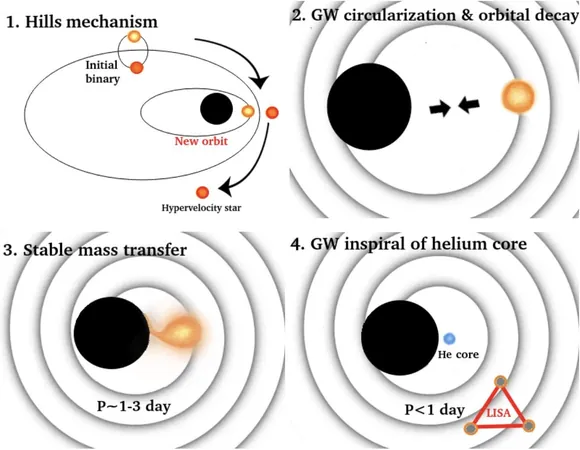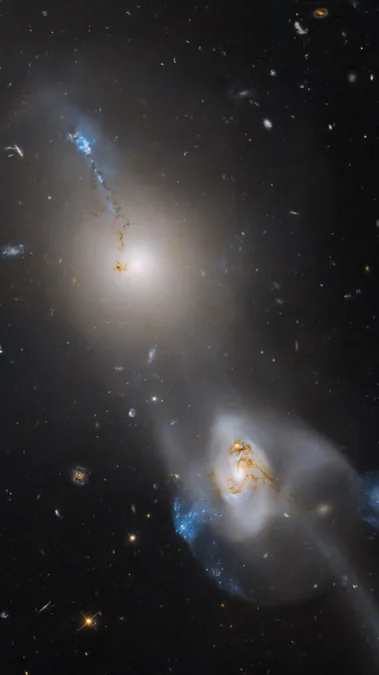
Unveiling the Cosmic Feast: Supermassive Black Holes and Helium-Core Stars
2025-04-09
Author: Nur
Could Supermassive Black Holes Create Bare Helium Cores?
When we think of black holes, we often picture them as voracious beasts, ravenously consuming stars that stray too close. But what happens in the gray area between being devoured and surviving the ordeal? A recent study pushes the boundaries of our understanding, exploring an intriguing scenario that involves the stripping of dying stars down to their helium cores!
The Life Cycle of a Subgiant Star
Let’s dive into the world of subgiant stars, stars that are on the brink of transformation. These stellar giants, like the sun before it becomes a red giant, have nearly exhausted the hydrogen in their cores. They are in a transitional phase, full of potential but destined for change.
A Dance with Destiny: The Double-Star Scenario
Imagine this subgiant as part of a binary system located at the heart of our galaxy, the Milky Way. As their cosmic ballet plays out, this pair takes a perilous path, passing perilously close to the supermassive black hole, Sagittarius A* (Sag A*). Here’s where it gets thrilling: one star escapes while the subgiant gets trapped in a close orbit.
The Stripping Process: A Star's Demise
As the subgiant spirals closer to Sag A*, the black hole's gravitational pull begins to strip away its outer layers, creating a phenomenon that’s equal parts fascinating and horrific. The result? A dense, shiny helium core left dangling like a cosmic marionette, left to drift ever nearer to its fate.
An Enigma Wrapped in Gravitational Waves
What makes this scenario particularly intriguing is that unlike spectacular tidal disruption events where stars are completely torn apart, this process lacks the dazzling light show. Instead, the bare helium core won’t create the bright flares we typically look for, especially considering Sag A* is veiled in gas and dust.
The Future of Gravitational Wave Detection
But do not despair! There might still be a way to witness this cosmic drama unfold. The remnants of this stripped star will emit gravitational waves, noise in the fabric of spacetime that could be detected by future observatories like LISA (Laser Interferometer Space Antenna). Researchers ran the numbers and found that these helium cores could be detected even from billion-light-year distances!
A New Frontier in Cosmic Exploration
As scientists continue to explore the bizarre and beautiful manifestations of gravity, the possibility of spotting a helium core circling a supermassive black hole opens a whole new chapter in astrophysics. Could these elusive signals be the key to unlocking more secrets of the universe? Only time—and technology—will tell!


 Brasil (PT)
Brasil (PT)
 Canada (EN)
Canada (EN)
 Chile (ES)
Chile (ES)
 Česko (CS)
Česko (CS)
 대한민국 (KO)
대한민국 (KO)
 España (ES)
España (ES)
 France (FR)
France (FR)
 Hong Kong (EN)
Hong Kong (EN)
 Italia (IT)
Italia (IT)
 日本 (JA)
日本 (JA)
 Magyarország (HU)
Magyarország (HU)
 Norge (NO)
Norge (NO)
 Polska (PL)
Polska (PL)
 Schweiz (DE)
Schweiz (DE)
 Singapore (EN)
Singapore (EN)
 Sverige (SV)
Sverige (SV)
 Suomi (FI)
Suomi (FI)
 Türkiye (TR)
Türkiye (TR)
 الإمارات العربية المتحدة (AR)
الإمارات العربية المتحدة (AR)